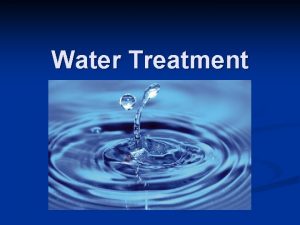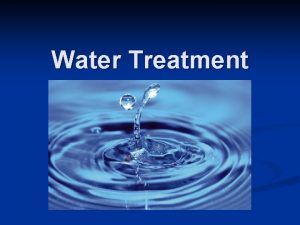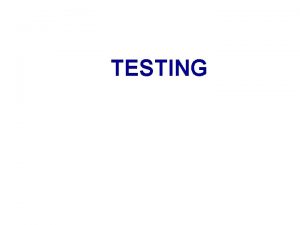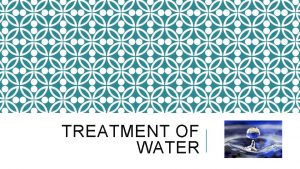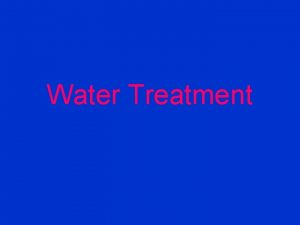Water Treatment Water Infrastructure Water Testing Detection and







- Slides: 7

Water Treatment, Water Infrastructure, Water Testing, Detection and Monitoring Isabel C. Escobar, Chemical & Environmental Engineering April Ames, Public Health & Prevent Medicine Defne Apul, Civil Engineering Thomas Bridgeman, Environmental Sciences Daryl Dwyer, Environmental Sciences Cyndee Gruden, Civil Engineering Charles Lehnert, Corporate Relations Michael Valigosky, Public Health & Prevent Medicine

Sedimentation ponds to improve water quality: Daryl Dwyer • • • Sedimentation Pond – For preliminary results after 2 months, estimations of the overall improvements in water quality on an annual basis = 10 tons (50 %) of phosphorus prevented from entering Lake Erie and 75 % of E. coli in Wolfe Creek prevented from entering beach waters If scaled to Maumee River watershed this could prevent 1, 000 tons (~50 % reduction) of phosphorus from entering Lake Erie which exceeds the target value of 37 % (Phosphorus Task Force II – Final Report) For this to be effective in the Maumee River watershed we must implement sedimentation ponds in a variety of locations throughout the watershed Possible Locations for Future Implementation Flatrock Creek, Auglaize, OH Missionary Island, Waterville, OH **Chokepoints

Current Water Treatment Techniques • Must use several methods in conjunction to eliminate both cells and toxins • Coagulation/flocculation/sedimentation are not enough • Activated carbon • Final treatment with chlorination • Pretreatment with an oxidant will kill the algae and release T&O compounds • The algae and T&O compounds can increase DBP production

Polishing Water Treatment: Isabel Escobar S The application of activated carbon is one of the most efficient measure for dissolved toxin removal S Oxidation & disinfection: S Assessment of the influence of water quality parameters (DOC, alkalinity, p. H, temperature, ammonia) on toxin oxidation S Need biofiltration to follow S Membrane filtration efficiency (ultrafiltration, nanofiltration, reversed osmosis): S Limited information available Algal exopolymer particles (TEP) on a membrane surface

Transport and Fate of Cyanotoxins in Aged Drinking Water Distribution Systems and Building Water Systems Youngwoo Seo Scopes • Understand interaction (accumulation and degradation) of cyanotoxins with pipe surface • Develop removal methods at the treatment plant or at local water distribution points • Develop decontamination protocols with hydraulic and water quality modeling Scaling and bacterial biofilm formation on a corroded pipe Accumulation and potential degradation of cyanotoxinx

Rain Harvesting Systems: Defne Apul

Detection in Water Samples: Joseph Lawrence, Isabel Escobar • ELISA (Enzyme-Linked Immuno. Sorbent Assay) specific immunological assay based on the reaction of all microcystins with antibodies. • Interferences, such as calcium • HPLC (High Performance Liquid Chromatography) separates individual microcystin variables by their absorption spectrogram in a photodiode array detector. • Interferences, such as humics in surface water








